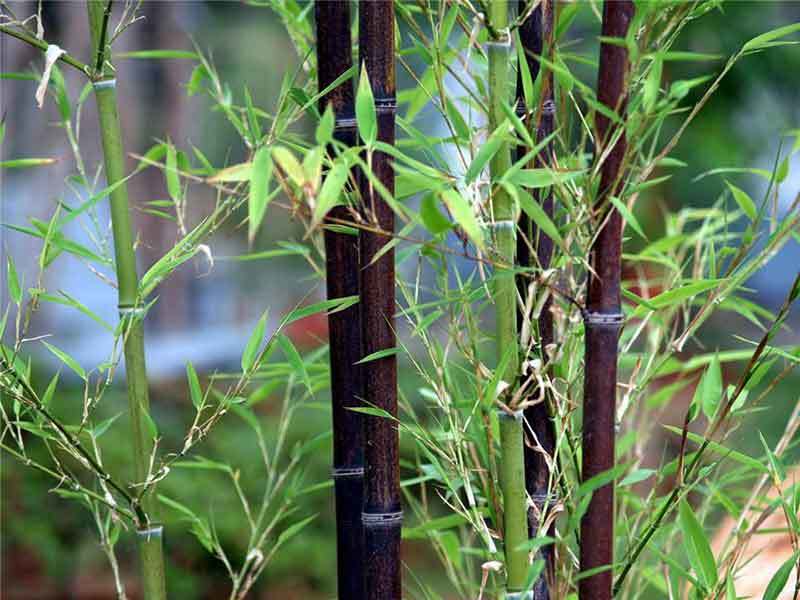Bamboo Leaves Turning Brown: Causes and Remedies
Introduction
Bamboo bamboo plant leaves turning brown is a sign of a few common issues. You can address most of them with some attentive care.
Why Is My Bamboo Plant Turning Brown?
Overwatering
Bamboo can also suffer from overhydration. If the roots are consistently saturated, they are deprived of oxygen and begin to rot. Symptoms of overwatering appear as browning or yellowing of the lower leaves. This can progress to the whole leaf dying and falling off.
Underwatering
Too little water can also lead to bamboo leaves turning brown. Without sufficient water, the plant can't perform photosynthesis effectively. This will cause desiccation and discoloration of the leaves.
Sunburn
Bamboo can withstand a fair amount of sunlight. But don't expose it excessively to direct sunlight. This can cause the leaves to burn and dry out. The leaf will brown along the edges or entire sections.
Nutrient Deficiency
Bamboo plants need a balanced diet to thrive. When they lack essential nutrients, indoor bamboo leaves will turn brown. Nitrogen is critical for green foliage. Potassium helps with general plant health and resistance to stress. Iron is essential for the process of photosynthesis. Its deficiency can result in brown, yellow, or blackish spots on the leaves.
Pests and Diseases
You should prevent and manage pests and diseases. Bamboo mites, aphids and mealybugs are common pests. They can damage the leaves and spread diseases. Fungal infections can lead to bamboo leaves turning brown and falling off. For example, leaf spot or bacterial leaf blight.
Diagnostic Steps
Visual Inspection
Look for signs of physical damage. These could indicate an environmental stressor. For example, direct sunburn or cold drafts. Root-bound in containers may stress them. This results in brown tips of the leaves or slowed growth.
Soil Moisture Test
Overwatering or underwatering can both lead to bamboo turning brown. Stick your finger into the soil about an inch deep. If it feels dry, it’s time to water. If it's still moist, hold off. For potted bamboo indoors, ensure your plastic plant pots have good drainage. Consider using a pebble tray to add humidity.
pH Testing
The soil pH is crucial for nutrient uptake. Imbalances can lead to bamboo plant leaves turning brown. Most bamboo species prefer slightly acidic soils with a pH of 5.0-6.5. Test your soil using a simple kit from a garden center. You will know if your plant is getting the nutrients it needs.
Pest Examination
Pests can cause brown bamboo leaves. For example, mites, borers, and caterpillars. Thoroughly inspect both sides of the leaves, along with the stems and soil. Look for any signs of infestations.

Remedial Actions
Adjusting Watering Routine
You should correct your watering schedule. This can often alleviate the browning of bamboo leaves. The key is to allow the soil to dry slightly between waterings. But make sure not to the point of dehydration.
Pruning
You should prune the brown or damaged bamboo leaves. This can tidy up the plant and encourage new growth. Sterile gardening tools can prevent diseases. Make clean cuts at the base of the affected leaf's stem.
Soil Amendment
An ailing bamboo might benefit from a nutritional boost. Organic fertilizers or soil amendments can help rectify nutrient deficiencies. You should use fertilizers designed for bamboo. Follow the application instructions carefully to avoid overfeeding. This is as detrimental as underfeeding.
Pest Control
Addressing the infestation if pests are to blame. Use insecticidal soaps for the more natural approach. You can also introduce beneficial insects to prey on the pests. You should use chemical methods with caution and as a last resort. Ensure they are bamboo-safe formulations.
Preventive Measures
Proper Placement
Understanding the light and temperature needs of your specific bamboo variety. This can prevent a multitude of issues. Place your indoor plants in locations that mimic their natural habitat as closely as possible. Consider moving plants during extreme temperature fluctuations.
Regular Maintenance
You should take consistent care and attention. Catch issues early and respond with appropriate measures. Make plant care a regular part of your routine. Check for any changes in color, size, or firmness of the leaves. Address changes immediately to prevent further damage.
Fertilization Schedule
Establish a fertilization routine that coincides with your bamboo's growth periods, typically in the spring and summer. Check your plant's response to the current regimen. Adjust as necessary.
Pest Prevention
Keep your bamboo clean and free from debris and dead leaves. These can harbor pests and diseases. Consider wiping down the leaves with a damp cloth periodically to remove dust and buildup. This can deter pests and improve photosynthesize.
Conclusion
Why is my bamboo turning brown? You should understand the causes of bamboo plant turning brown. Taking steps to correct them. Your bamboo plant will regain its natural verdant vitality.

